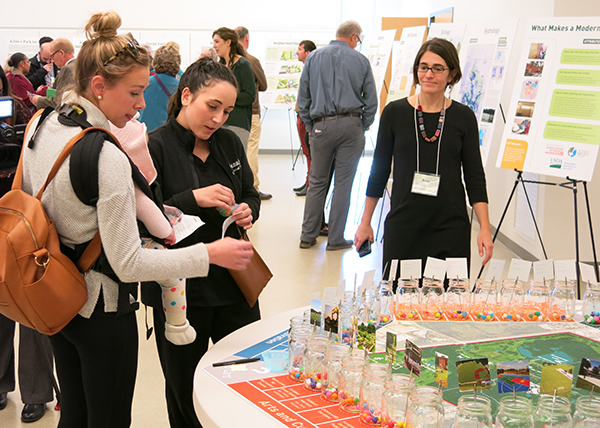Think Big: Public Engagement
Digging into scenario planning and exploring questions about how to field community input
 Sasaki
Sasaki

Zachary Chrisco, PE, and Michael Grove, ASLA, PLA, from Sasaki respond to Moving Forward on Climate Change.
Landscape architects have a critical role to play in solving the climate crisis. But we are fooling ourselves if we believe that landscape architects are the best equipped to lead the charge. The International Federation of Landscape Architects (IFLA) estimates that there are approximately 75,000 landscape architects around the world. Our numbers are small, as is our political capital. But our voice can be loud, if we are united in how we use it.
Although we often think of ourselves as artists, scientists, and craftsmen, our best asset is our ability to communicate, advocate, and educate. As a profession, we must hold ourselves to the highest standards. While artistry and craftsmanship will always be important contributions, our focus at this point in time should be on the scientific integrity of our work. Landscape architects must reach beyond our comfort zone. We must truly understand climate science. We must collaborate with allied scientists to seek breakthrough innovations together. We must conduct post-occupancy evaluations of our work, accumulating metrics that will allow us to learn from our successes and our failures. We must use a fact-based approach to educate governments, private clients, and citizens about the profound impact we can have. But most importantly, we must involve them in the process and get them excited about being part of the solution. Landscape architects, by being more vocal, can educate and instigate, but ordinary citizens are who must ultimately be heard. When citizens demand change, change will occur.

In our practice at Sasaki, we have the privilege of leading public outreach processes in a wide variety of places around the United States. Our work in California, Louisiana, and Florida spans the political spectrum. While it is often the case that many governments “seek to maintain short-term economic growth rather than investing in the long-term,” interestingly, we are beginning to hear the exact opposite sentiment from members of the public. More than ever, communities are willing to put aside political differences to have open, thoughtful discussions on issues ranging from increased extreme heat to food deserts to sea level rise.
Perhaps the dialogue has been spurred by a recent weather event in their community, or a “near miss” that would have directly impacted their property. Perhaps the current political climate in the United States has inspired people to do their own research and to draw their own conclusions about climate change. Whatever the catalyst, we find ourselves fielding questions all across the country about community vulnerabilities, the merits of managed retreat, and the linkage between a given project’s planning horizon to projected climate patterns.
Now is the time for the design community to tap into the public’s sense of urgency and hunger for facts about the impact of climate change on their communities. We must bring comprehensive yet clear data that expresses risks and vulnerabilities. We must articulate how landscape-based systems are multi-beneficial in nature. And we must do so in a way that enables members of all communities to understand and share their findings with their schools, their families, their friends, and their elected officials. The only way that we can begin to shift the needle on climate change is if we are all in it together. Landscape architects have a critical role to play in leading this charge, but our greatest impact will result from arming our citizen allies with knowledge, metrics, and facts, giving them the resources to demand action.